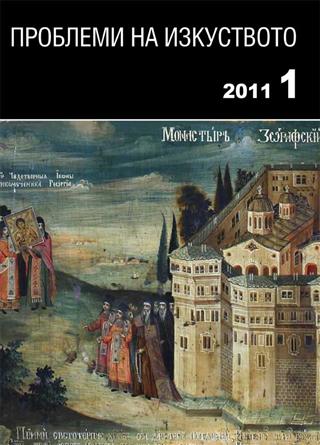Три неизвестни икони със страстите Христови от фондовете на Регионален исторически музей Велико Търново
On Three Unpopular Icons of the Christ’s Passions from the Regional Museum of History, Veliko Tarnovo
Author(s): Plamen SubevSubject(s): Fine Arts / Performing Arts
Published by: Институт за изследване на изкуствата, Българска академия на науките
Summary/Abstract: We have numerous Passion icons preserved on the territory of Veliko Tarnovo, Elena and Tryavna varied in their theme and authors. Most of them have not been studied, they are not properly conditioned and that is why, they need restoration urgently. Subject of my study are three icons, presenting moments of the Passion week which are kept in the Veliko Tarnovo mu- seum and are not published so far. The first icon holds chosen moments of the Passion week. The central part of it has six scenes. This specific combination of events follows the Good Thursday’s liturgical readings. In addition, the icon is dated from the second half of the 18th c. and its authorship originates from the Greek school. The other icon covers a larger range of liturgical readings; it has twelve scenes from the Great Lent and the Passion Week. On the second row we have interesting and somehow rare combination between scenes from the Passions of Christ and didactic plots of the future and the Second Advent. The third icon presents Christ’s Crucifixion on the Calvary but in a more symbolical and liturgical iconography. At the basis of the cross, where we’d typically notice the Adam’s skull we spot a sacrificial altar (a reminiscence of the Holy Table) and a seven-branch candleholder (Menorah) on it, and at the bottom we see a discos with the Body and the Blood of the Saviour. This interpretation leads towards the western artistic influence and the works of certain Renaissance authors. According to their purpose the icons can be viewed at as proskynetarion type, or from the Greek προσκύνηση – worship, meaning that they were specially purposed to give glory to the New Testament events. After the example of the Byzantine liturgical practice, in the biggest spiritual centers on the Balkans, in 18th and 19th cc. we have a lot of icons of the meneaologian type. Their contents have been reproduced in the Revival period in Bulgaria.
Journal: Проблеми на изкуството
- Issue Year: 2011
- Issue No: 1
- Page Range: 42-47
- Page Count: 6
- Language: Bulgarian
- Content File-PDF

